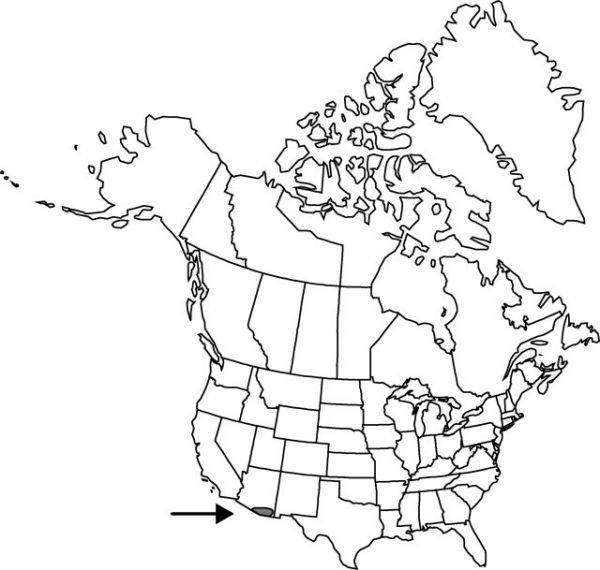Allium plummerae
Proc. Amer. Acad. Arts 18: 195. 1883.
Bulbs usually 1 of a cluster, sometimes short-rhizomatous basally, elongate, to 5 × 1–1.5 cm; outer coats enclosing 1 or more bulbs, gray or brown, reticulate, cells very coarse-meshed, open, fibrous; inner coats whitish, cells vertically elongate and regular or obscure. Leaves persistent, green at anthesis, 3–6, sheathing; blade solid, flat, broadly channeled, 25–50 cm × 3–7 mm, margins entire or minutely denticulate. Scape persistent, solitary, erect, terete or ± 4-angled, 30–50 cm × 1–3.5 mm. Umbel persistent, erect, loose, 10–25-flowered, hemispheric-globose, bulbils unknown; spathe bracts persistent, 2–3, 3–5-veined, lanceolate, ± equal, apex long-acuminate. Flowers ± stellate, 5–10 mm; tepals spreading or reflexed, white or pink, lanceolate, ± equal, withering in fruit and exposing capsules, margins entire, apex acute, midrib becoming noticeably thickened; stamens ± equaling tepals to exserted; anthers purple; pollen light yellow; ovary conspicuously crested; processes 6, central, usually connate in pairs across septa, ± erect, flattened, to 2 mm, margins lacerate, usually well developed in fruit; style linear, equaling stamens; stigma capitate, unlobed or obscurely lobed; pedicel 15–25 mm, elongating in fruit. Seed coat shining; cells each with minute, central papilla. 2n = 28.
Phenology: Flowering Jun–Sep.
Habitat: Rocky slopes, stream banks, and marshy ground, mountains
Elevation: 1600–2800 m
Discussion
Selected References
None.
